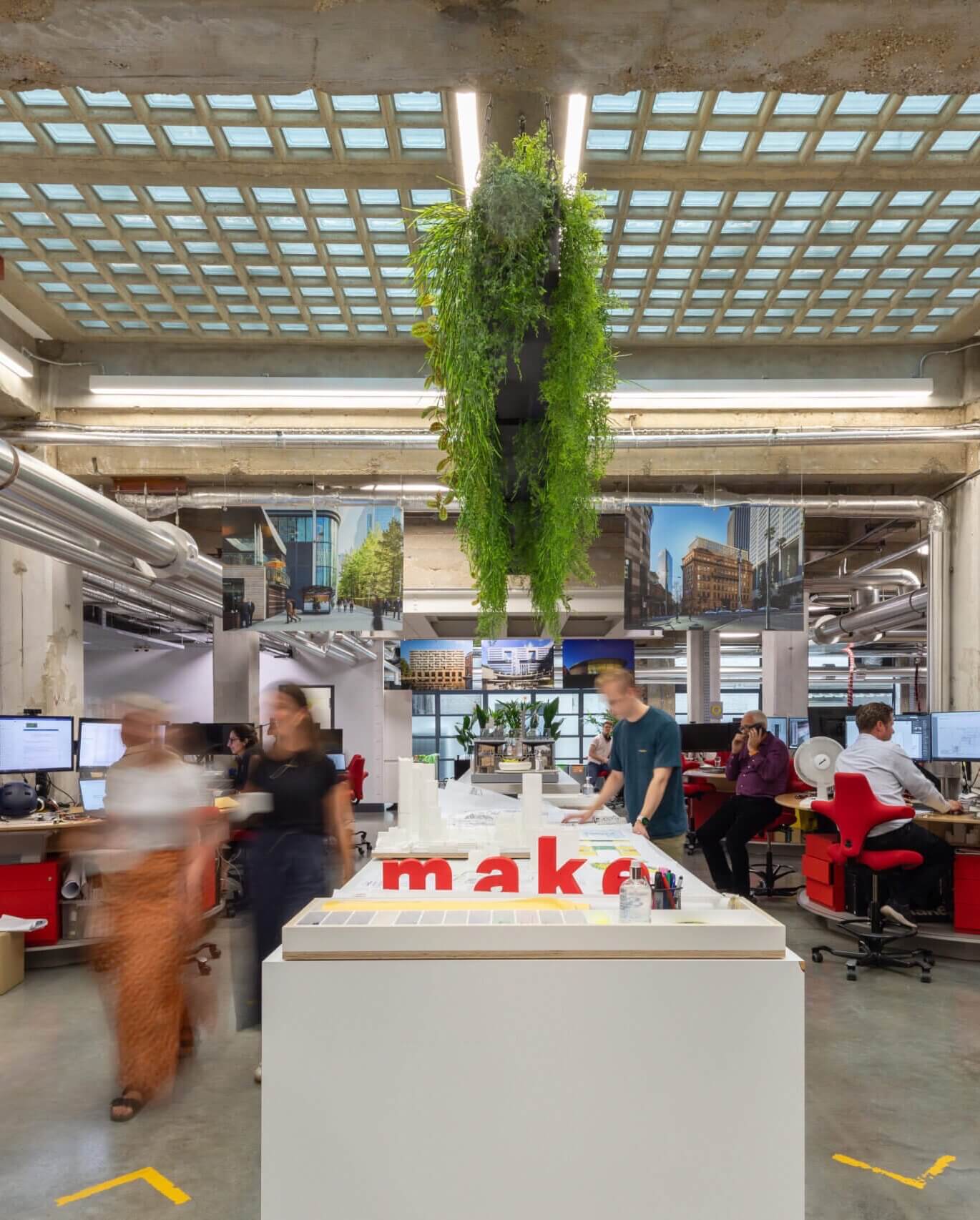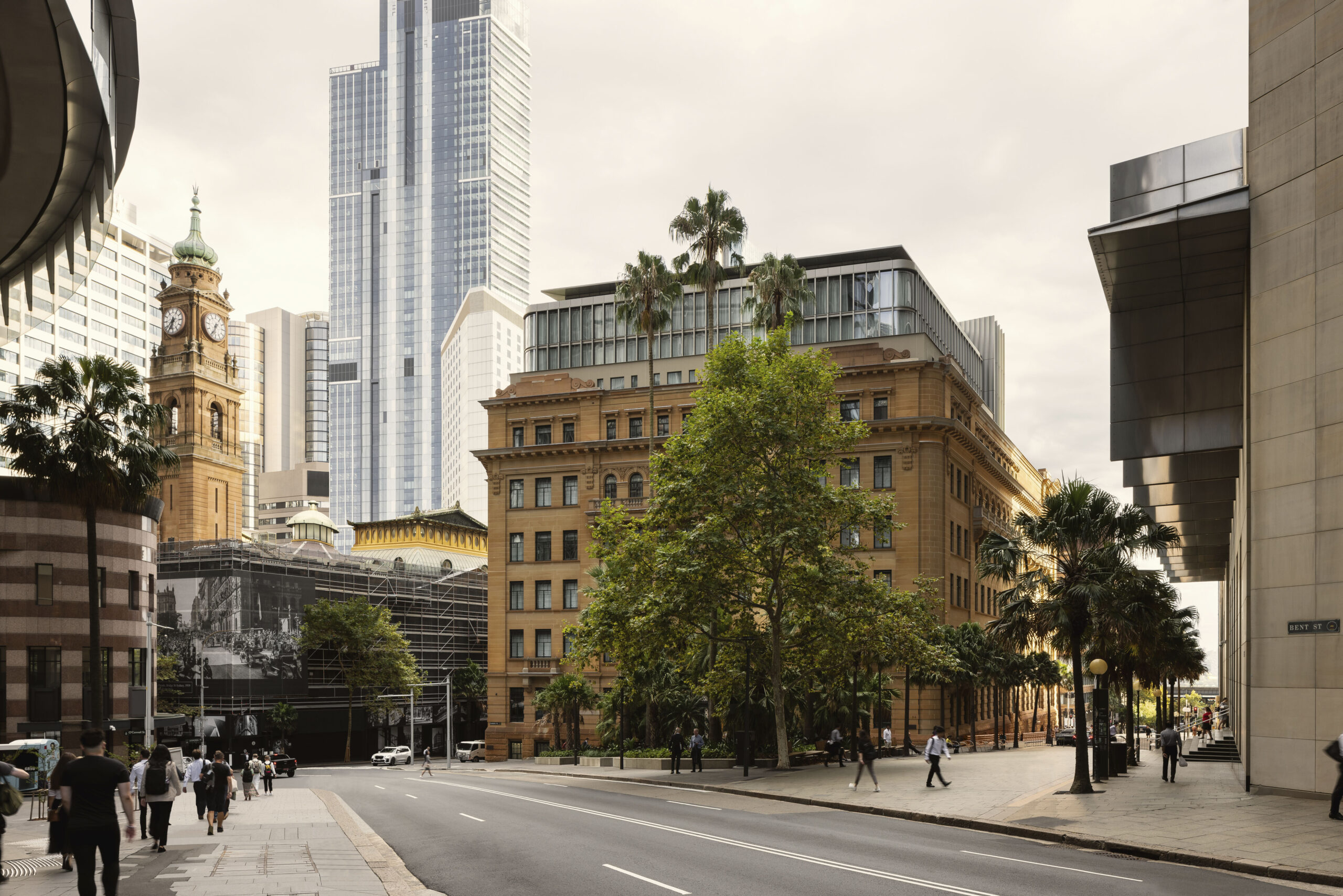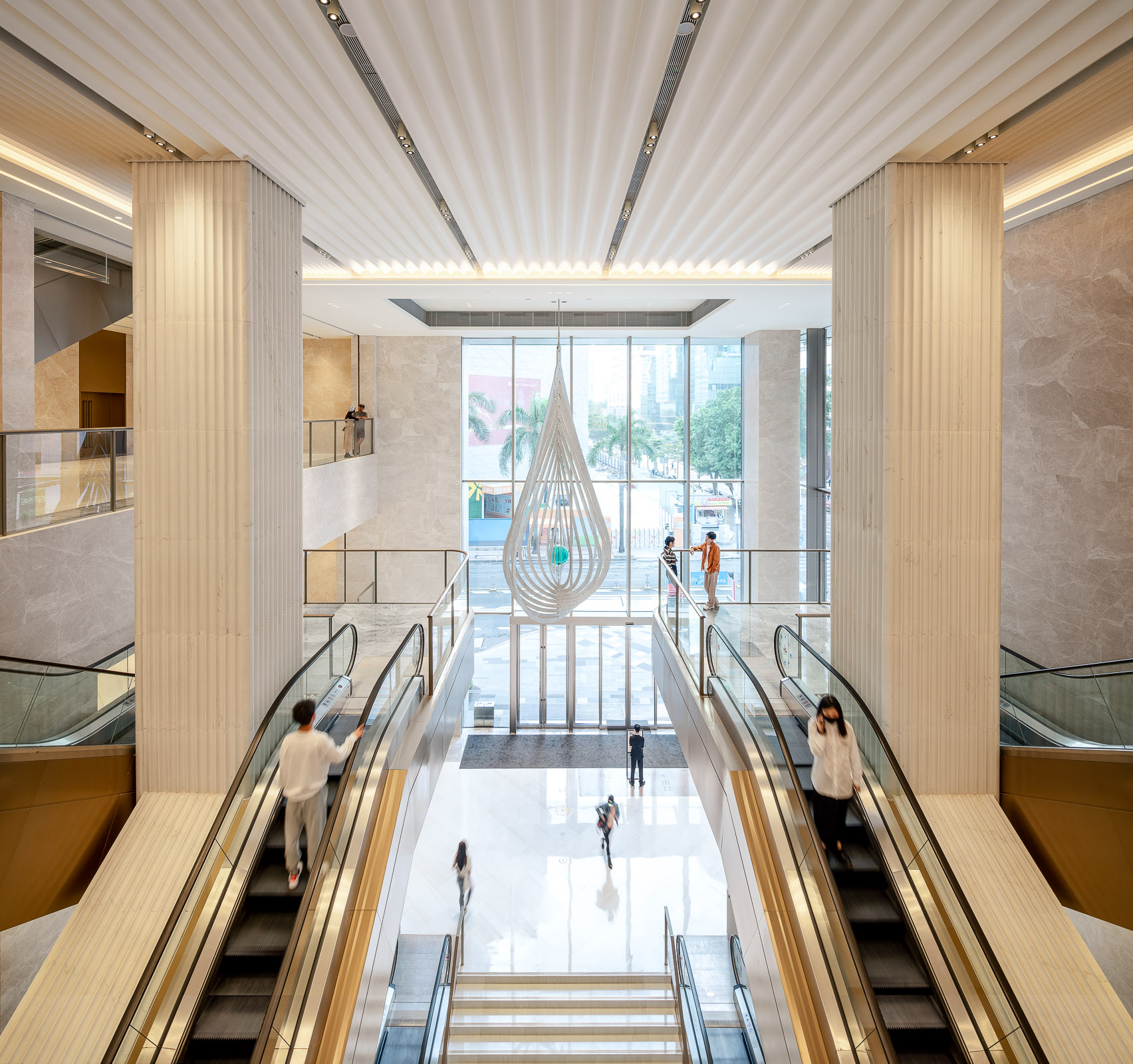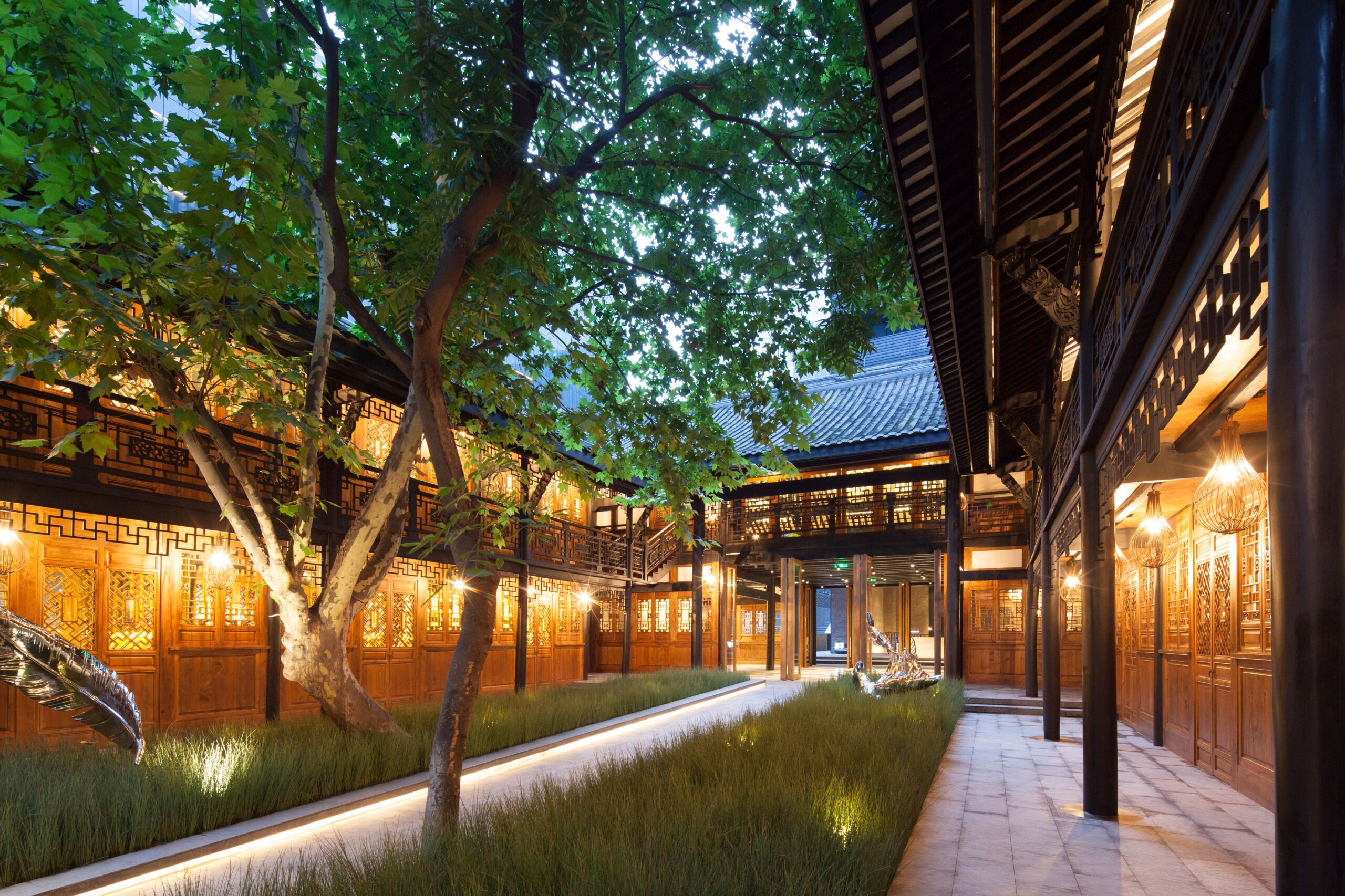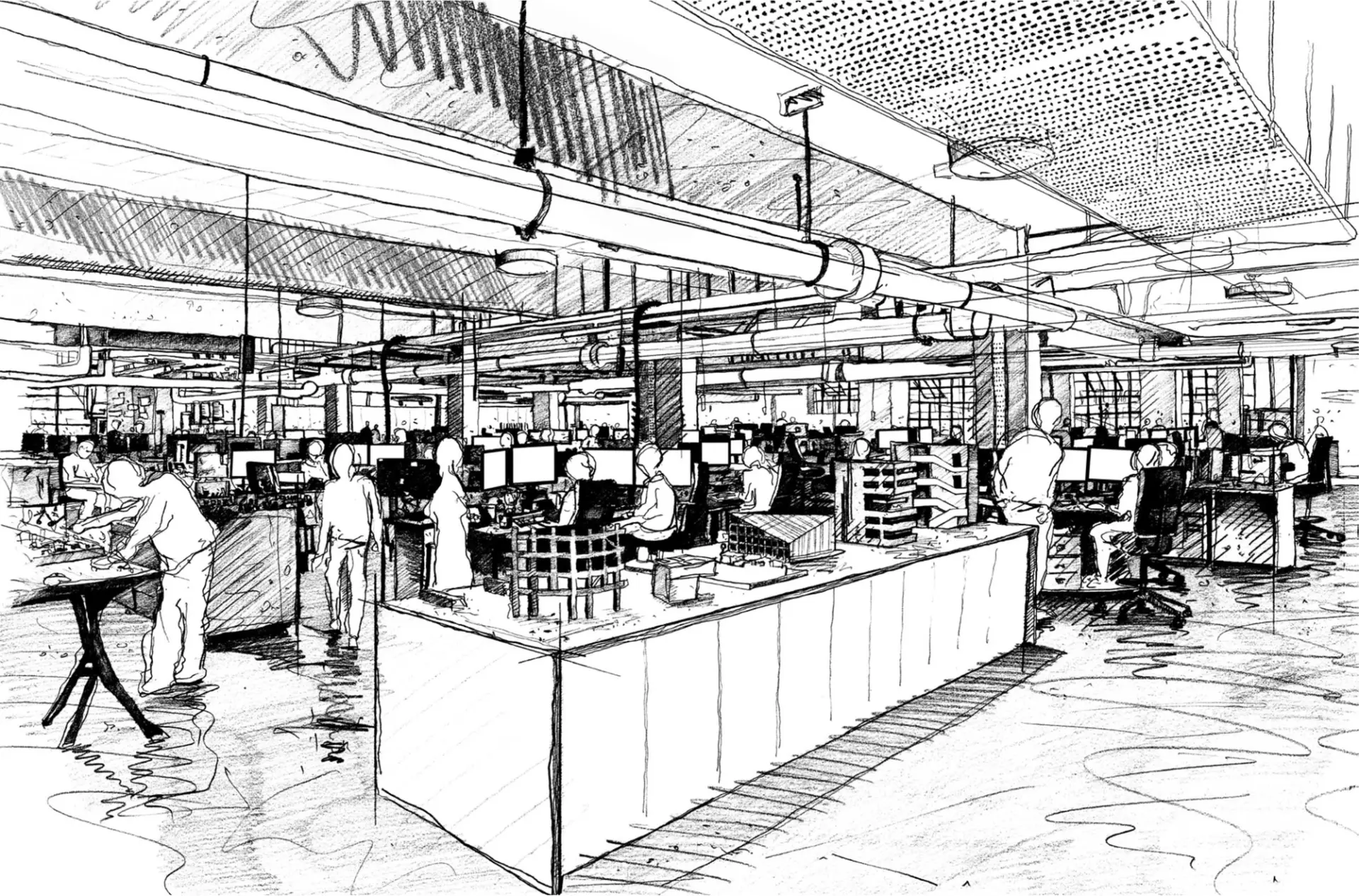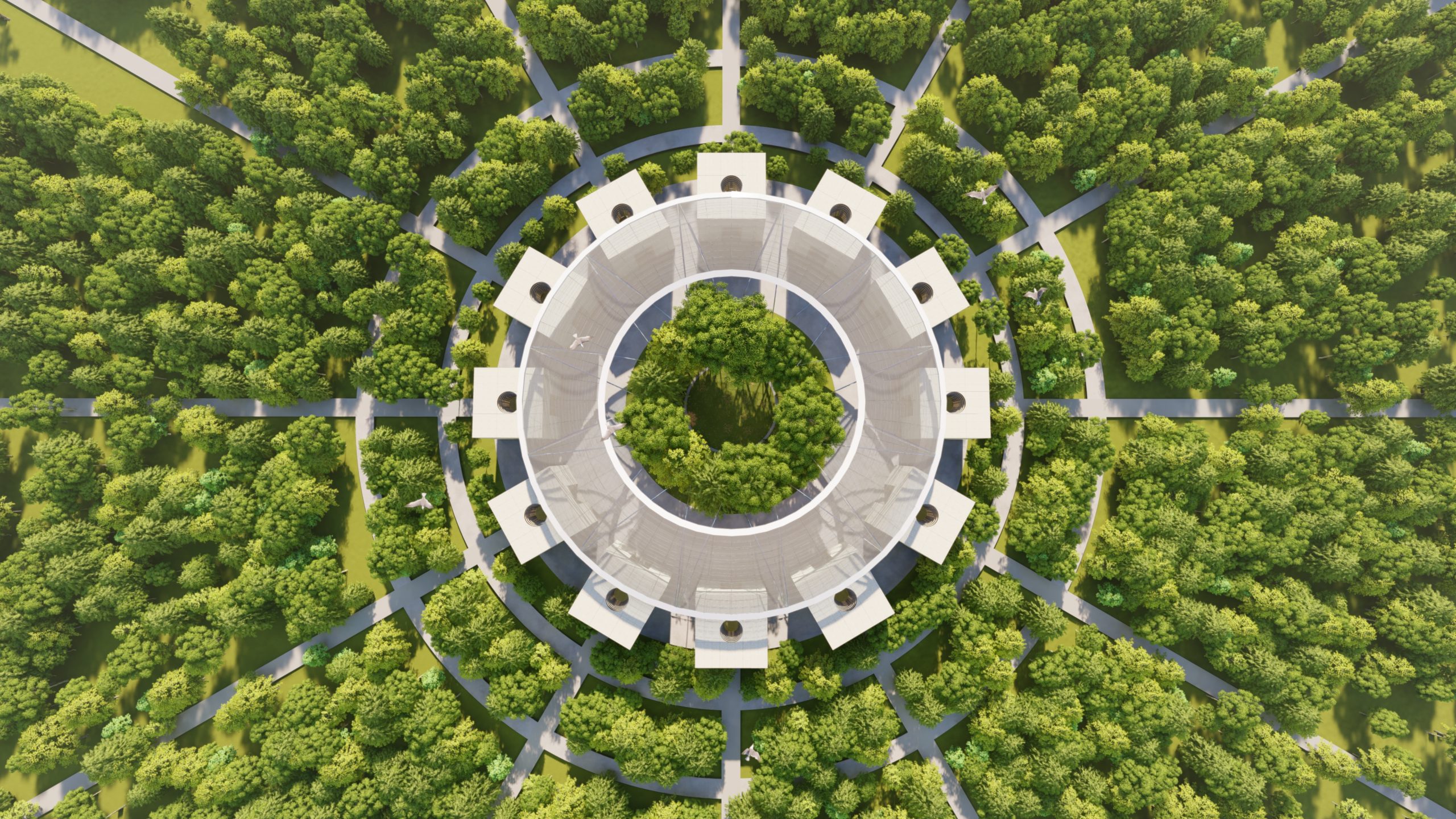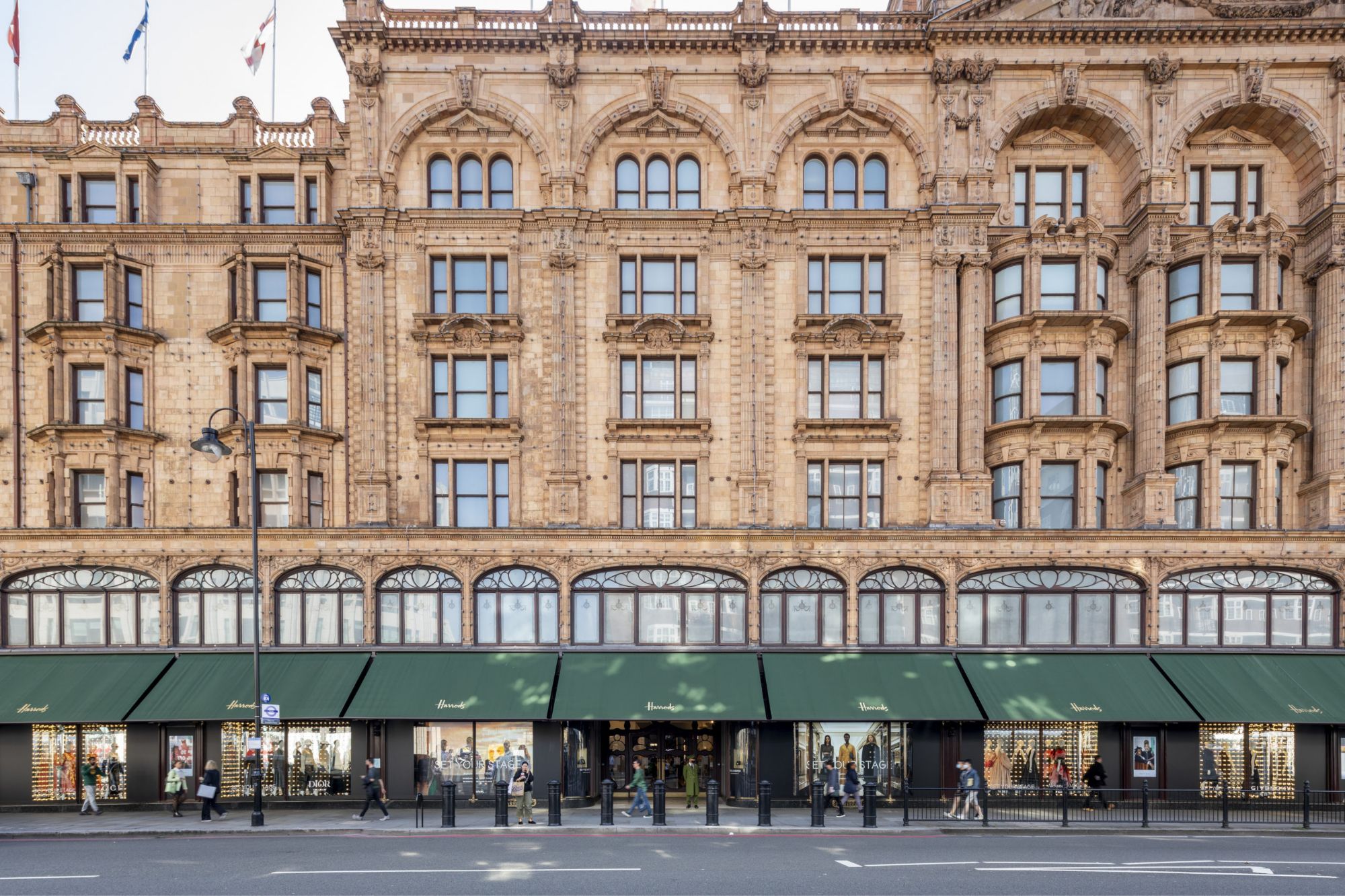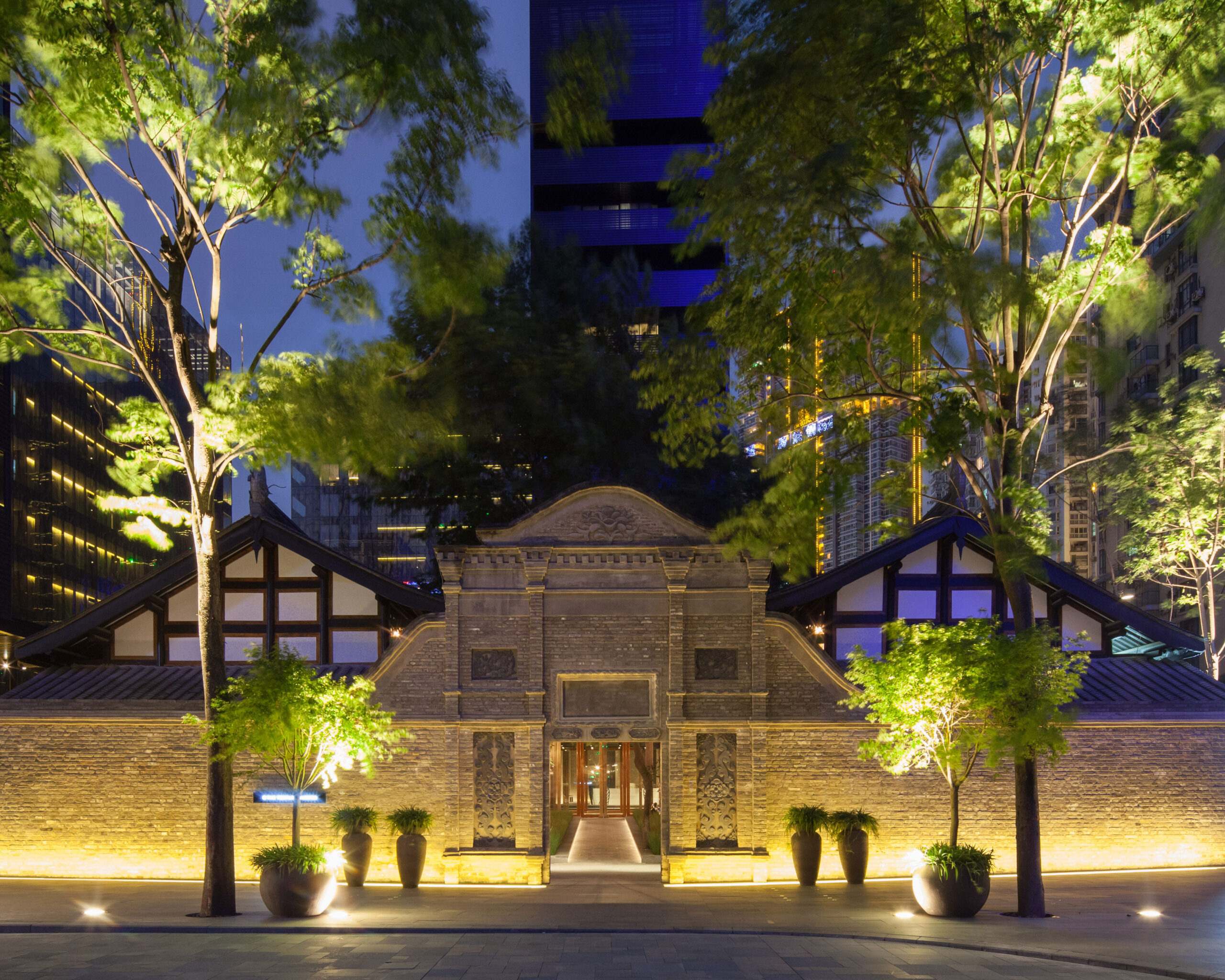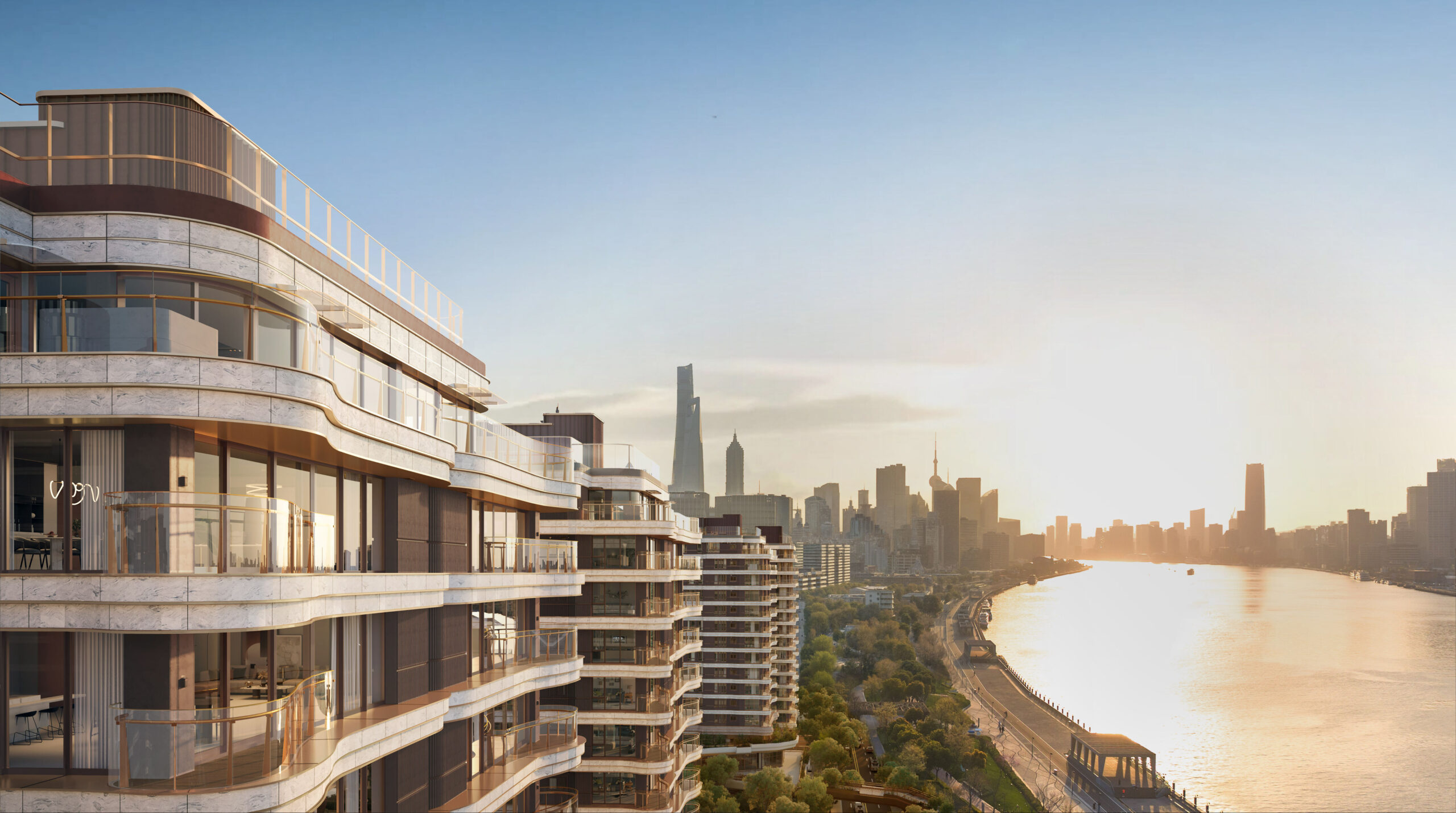



This notion of owning a place is intriguing and Ben explains,
“If I put people in the painting then you wouldn’t think it was your city. Because there is nobody in there at all, you can put yourself in it. Your city to walk around on your own – purely and simply to have your thoughts, memories, aspirations, inspirations.”
He adds that in works by artists whose depictions of places are populated,
“The figure, the person, claims the spaces and I want all my paintings to be unclaimed spaces.”

The combination of controlled precision and deliberate abstraction in the way Ben Johnson paints buildings and cities makes familiar places otherworldly. Of his series of cityscapes, Ben says,
“I hoped the paintings would become a springboard for what our cities could be.”
Yet he is keen to also draw attention to the actual process of making these works as a key to understanding them.
“I am a craftsperson who aspires to be taken as an artist. I would like to lift the level of my craft to the point of being art. I am a maker of things.”
There is, of course, no doubt that Ben is very much an artist. He often starts by studying his own photographs of the architectural subject matter he has chosen to paint, followed sometimes by drawing the photos up sometimes with the aid of architects’ plans or elevations. Together with his team at his studio, stencils are created from the drawings to allow for a layered approach to painting. It all requires painstaking skill, yet the result is about capturing a way of being not unlike a building might do. Ben is certainly interested in the notion of inhabiting buildings,
“I spend a lot of time walking around buildings trying to find the magic spot. It’s easier in churches. You’re often guided to a particular place and it’s the obvious spot to stand and contemplate. I think there is a secret life within all buildings that have been thought through well by good architects. I think good buildings tell you the story of their creation and the energy that was put into them.”



The same is true of works of art and applies to Ben ‘s mesmerising drawing of The Scrovegni Chapel in Padua. Last year, he submitted it for The Architecture Drawing Prize and like the other entered winning and commended drawings The Scrovegni Chapel was exhibited at Sir John Soane’s Museum. The Prize jury was impressed by the way it explores multiple views of space playing on our understanding of perspective.
This was very much Ben‘s intention,
“The Chapel is rotated 24 times around the central part of the building – this new reality or new space emerges.”
The drawing also plays on the notion of time feeling both contemporary and happily reminiscent of the proto-Renaissance works by Giotto whose frescoes cover the Chapel inside. Giotto is, of course, celebrated for his religious paintings that not only moved congregations of the period but taught them the stories of the Bible. His frescoes were thus important works in the art of communication. Ben Johnson is captivated by this and also by the primeval power of drawing as a medium. He mentions the notion of just having a stick and some sand emphasising that,
“By making a mark you can start a conversation”.

Structural Trees, Stansted, 1990 by Ben Johnson is part of the Arup collection and is exhibited at their Phase2 Gallery (currently online only)
This post forms part of our series on The Architecture Drawing Prize: an open drawing competition curated by Make, WAF and Sir John Soane’s Museum to highlight the importance of drawing in architecture.





